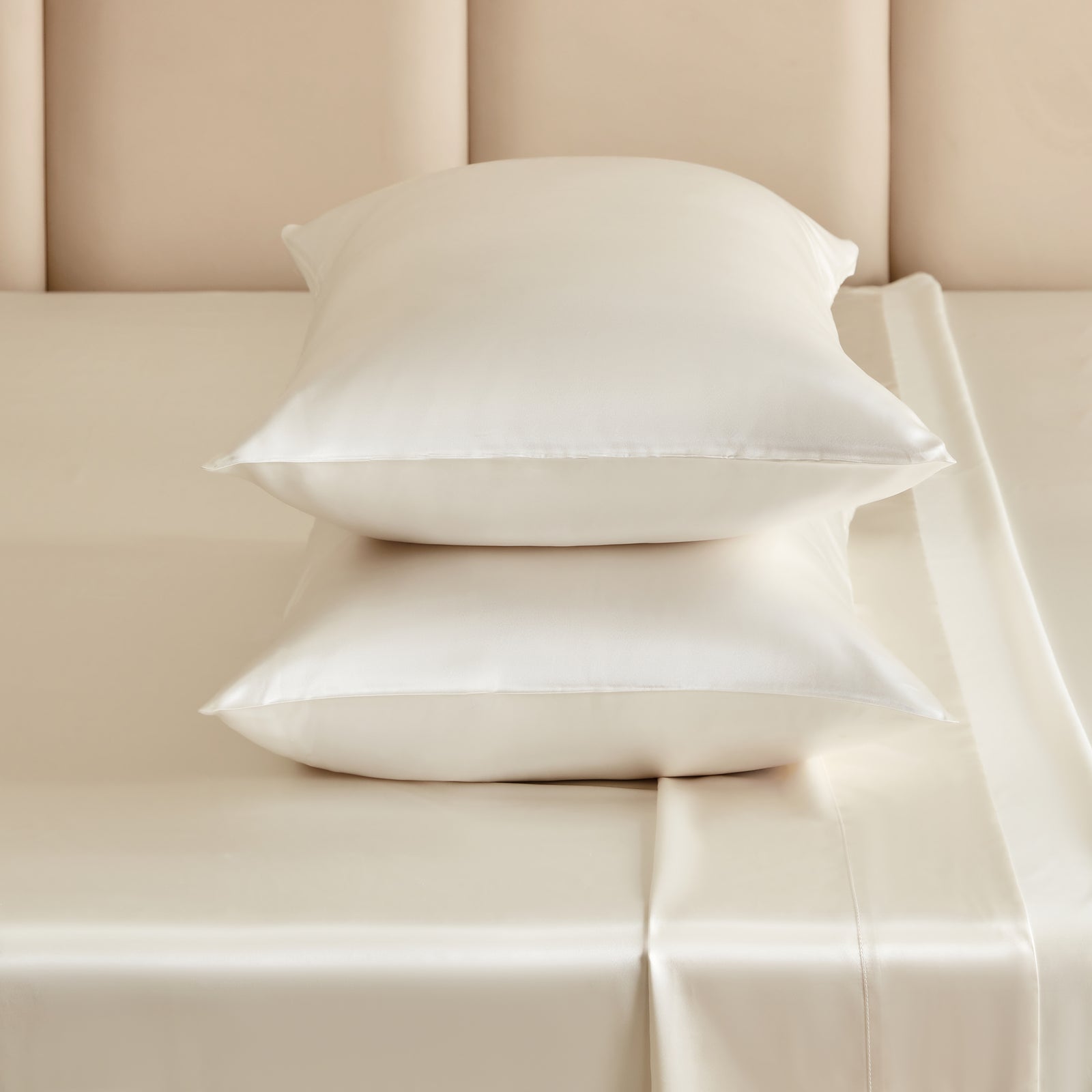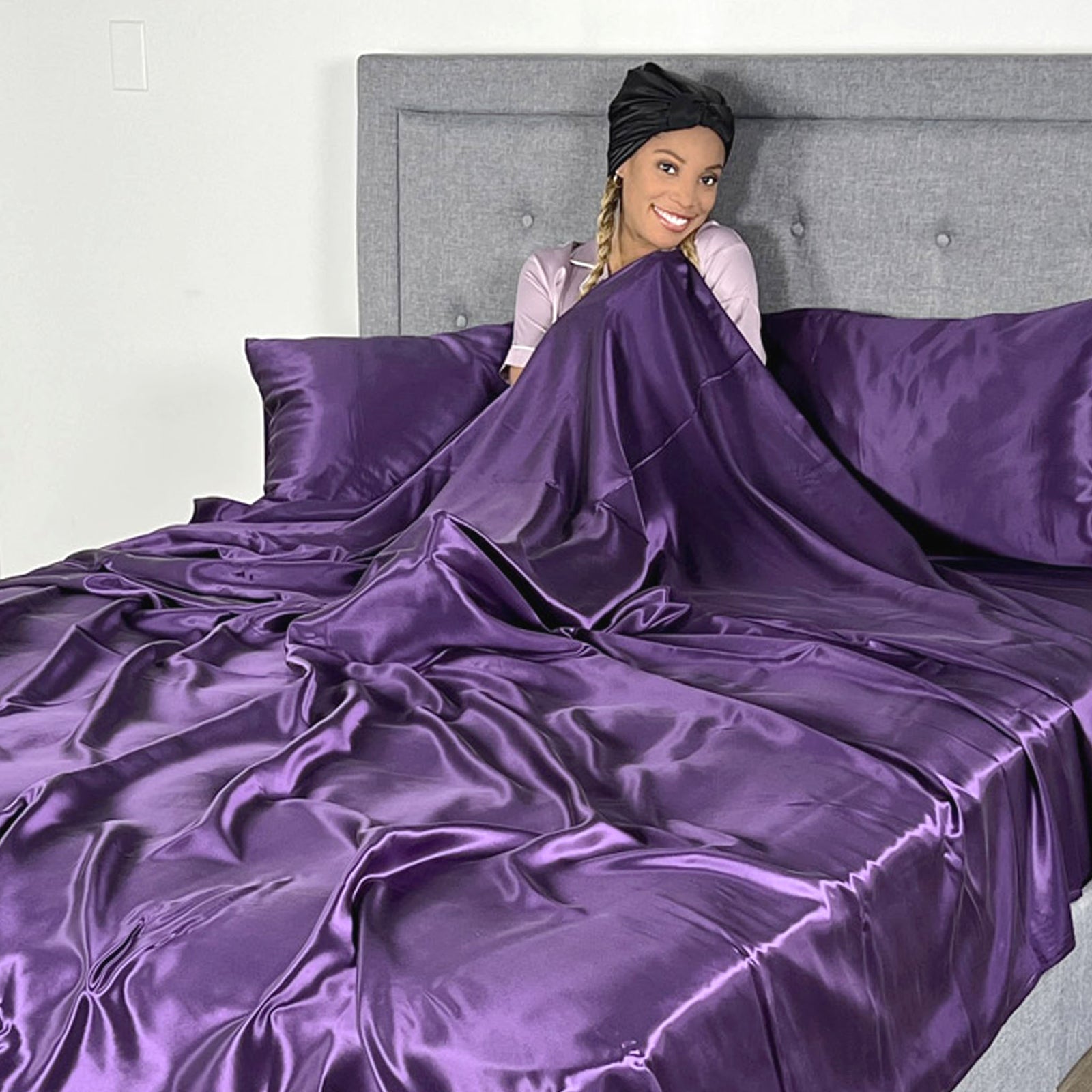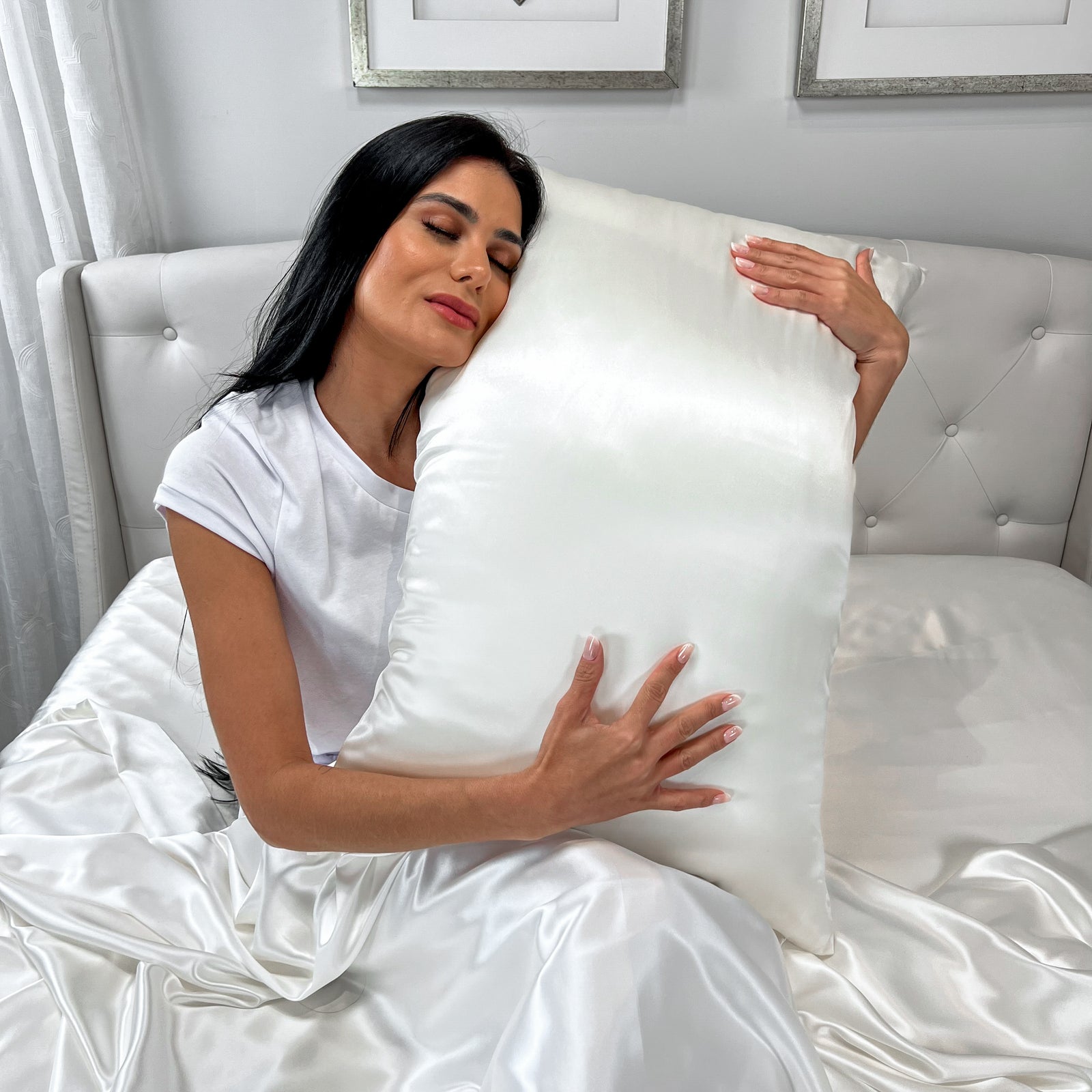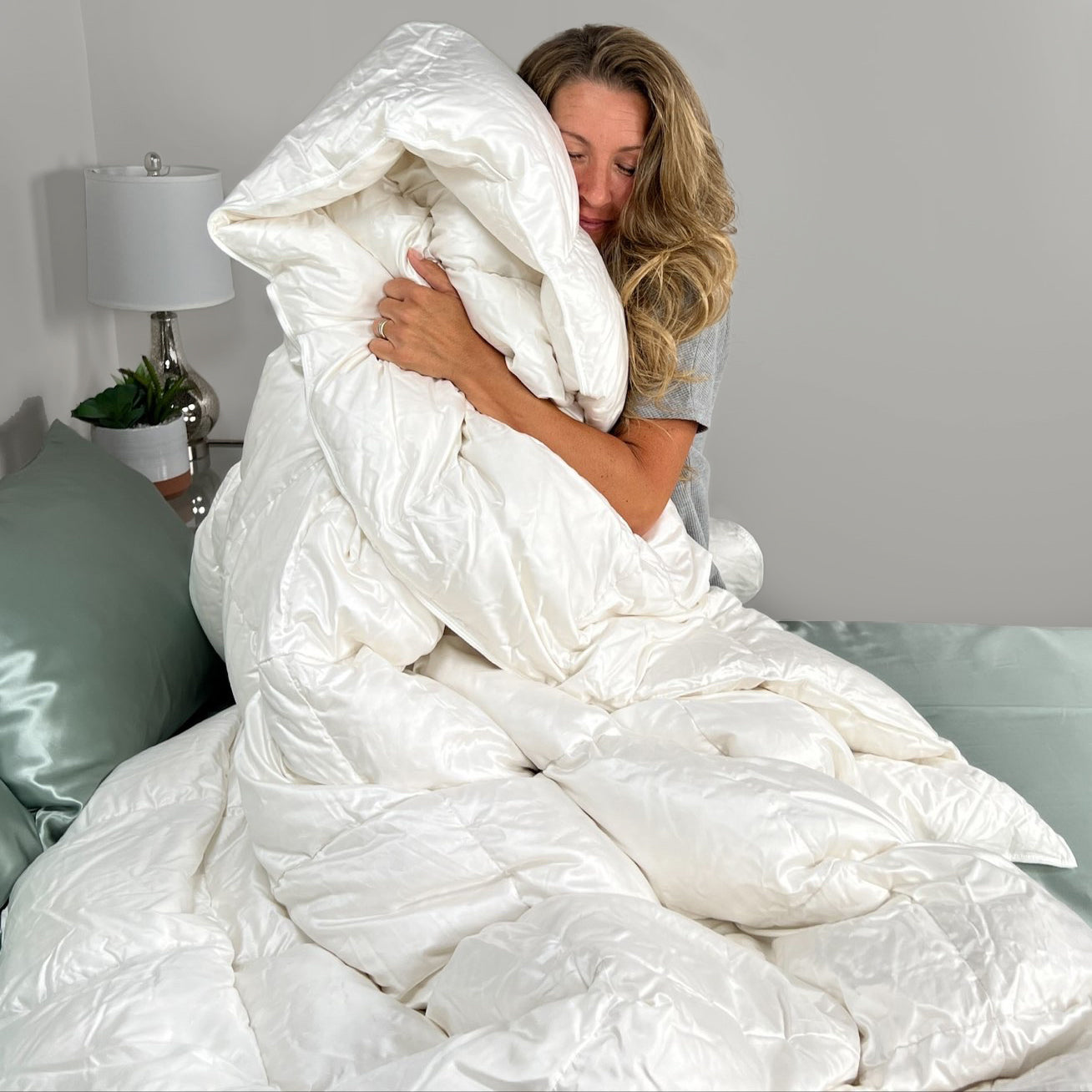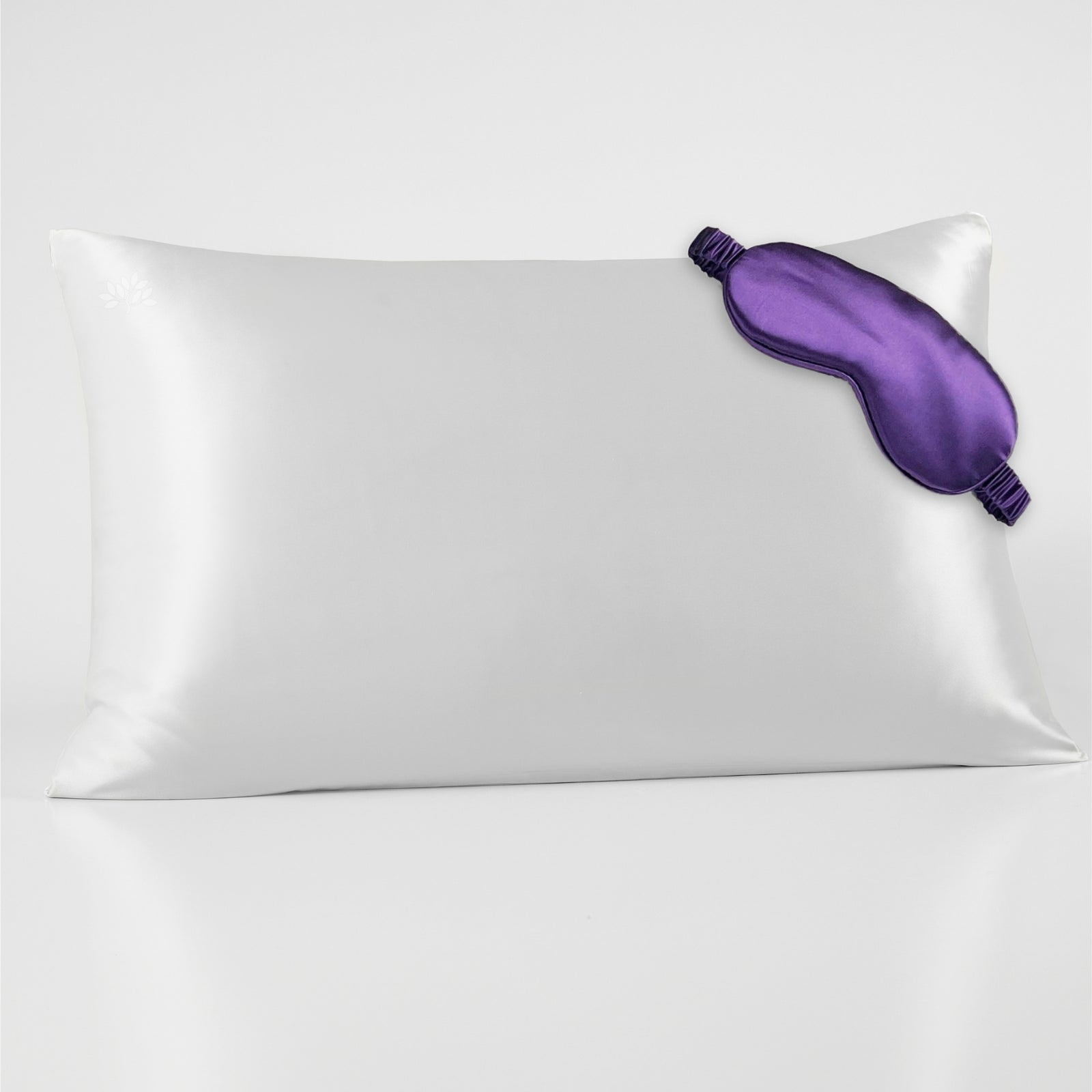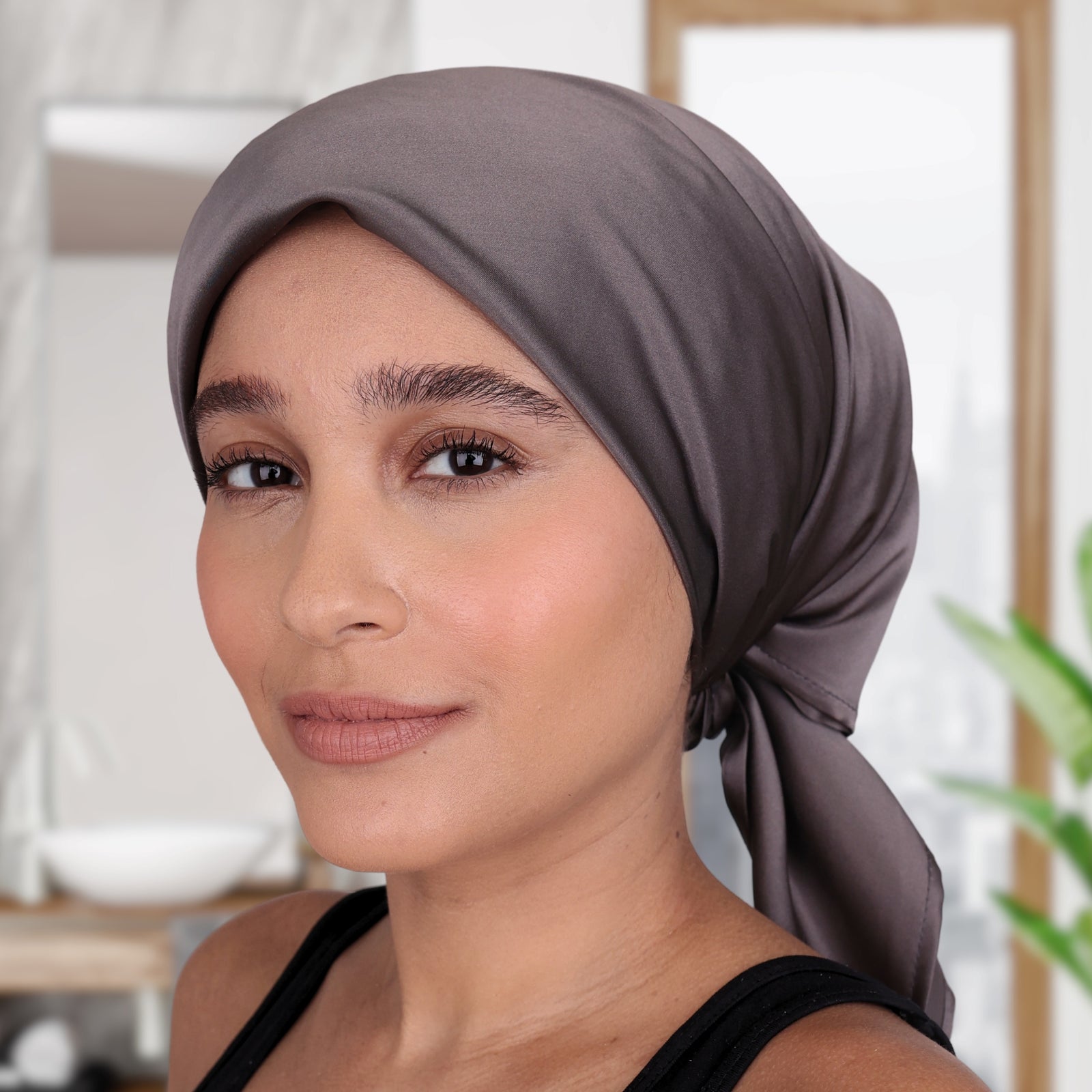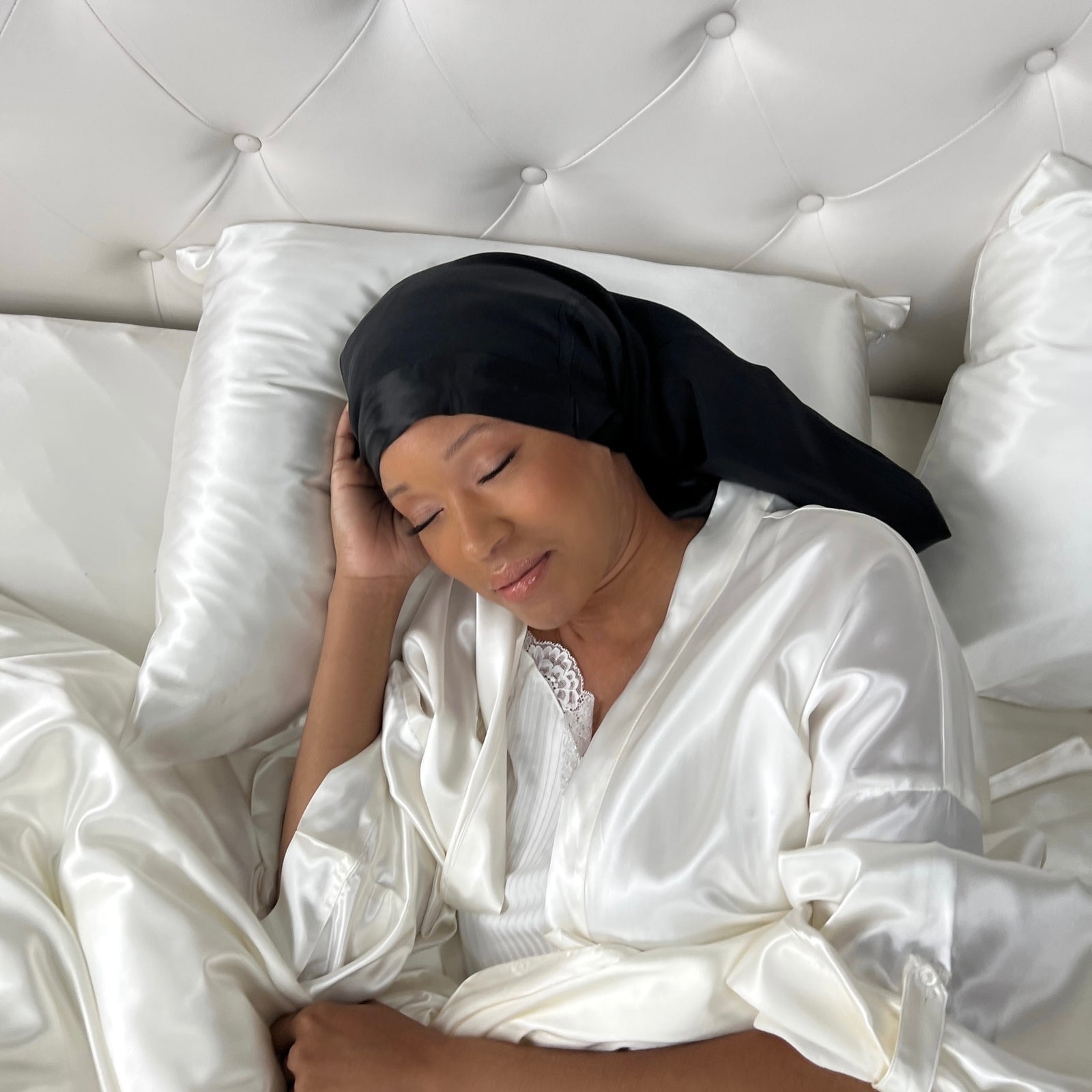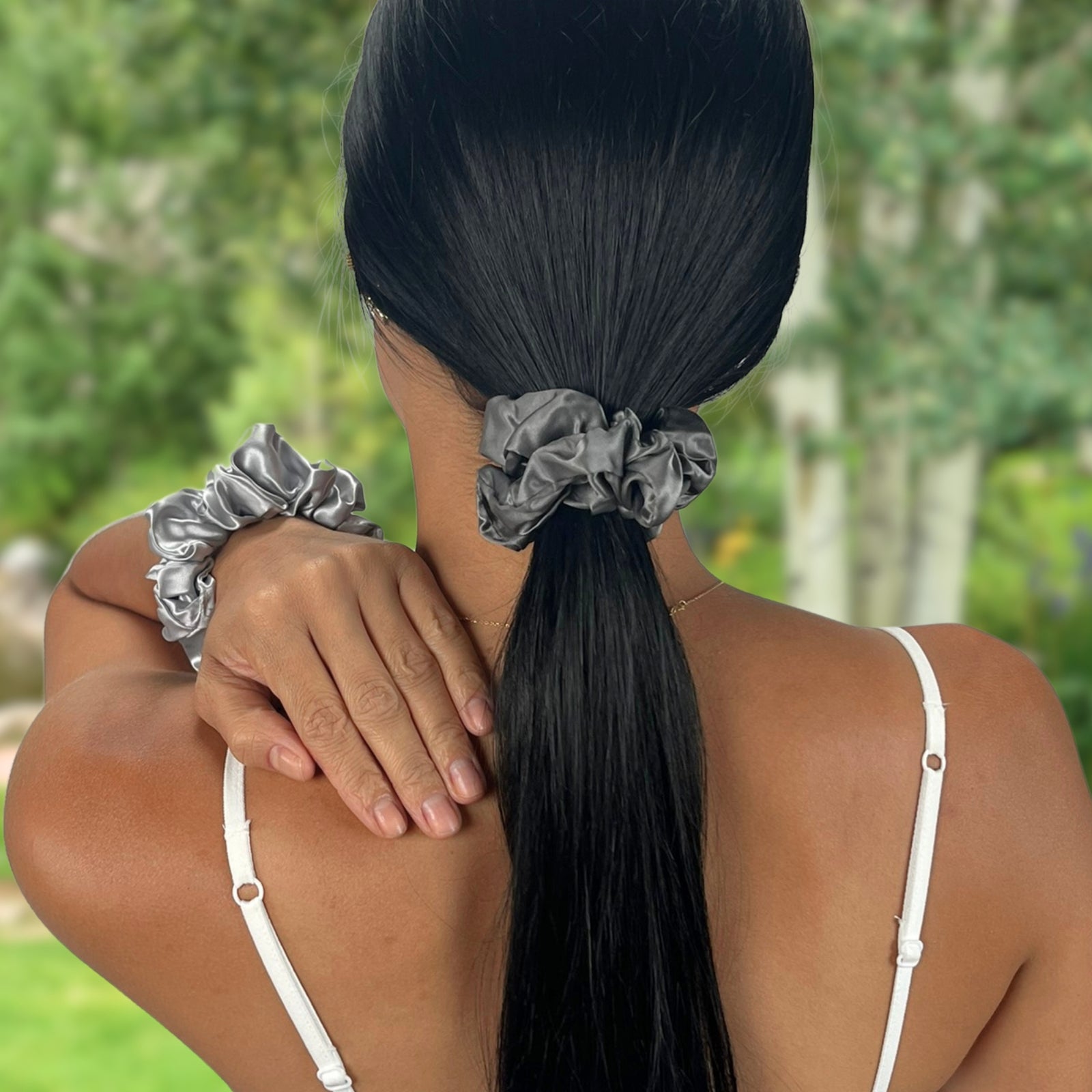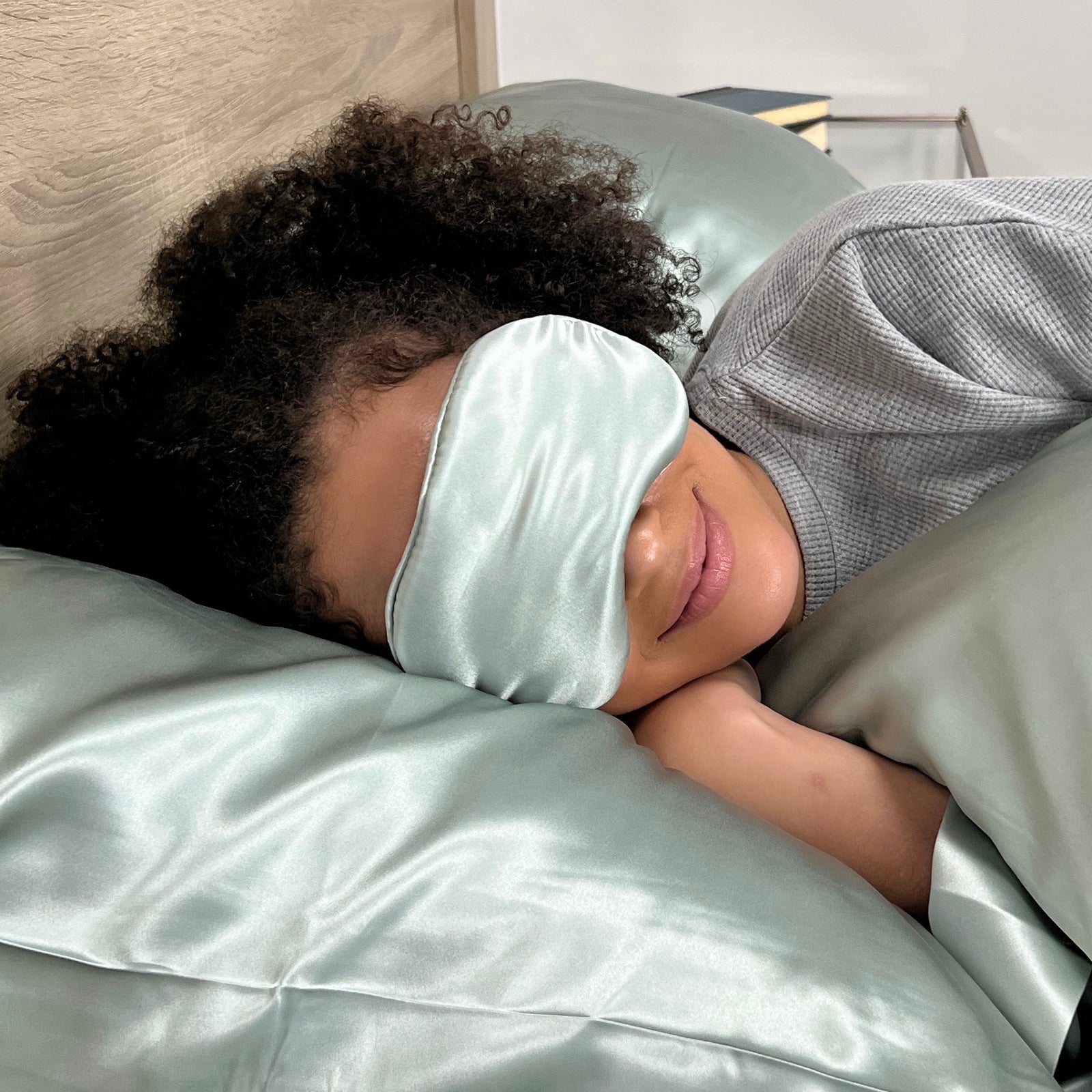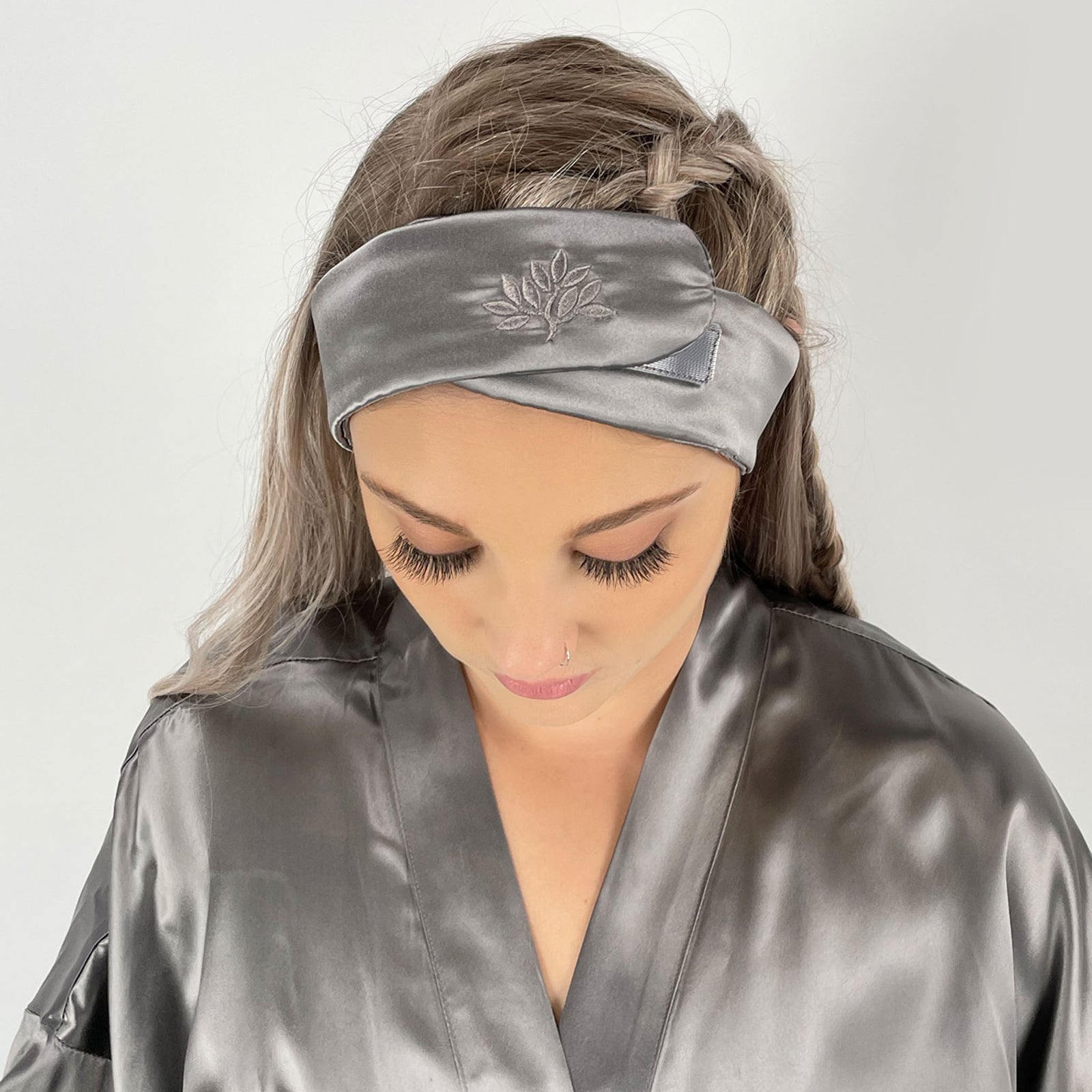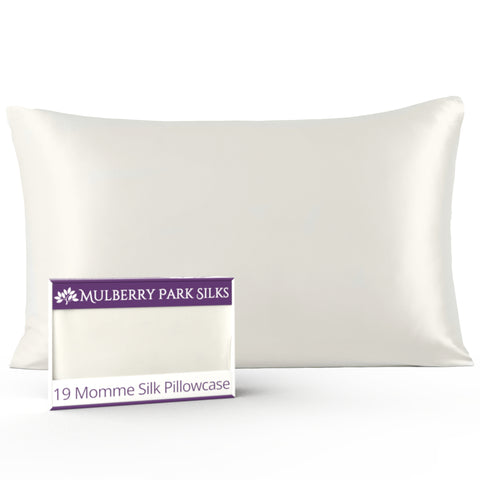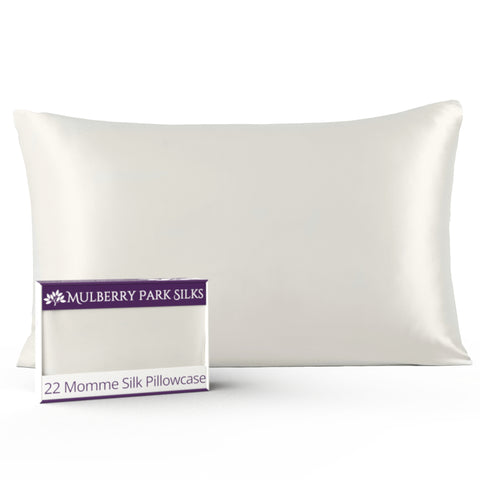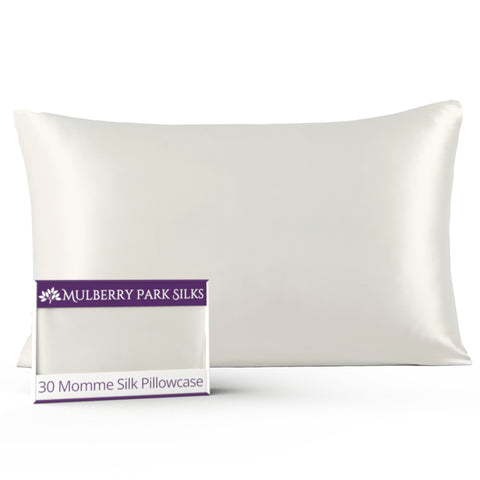If you have acne or sensitive skin, you probably spend a good bit of time -- and money -- caring for your face. Your routine may include special cleansers, lotions, and medication, both over the counter and prescription. It's a lot of effort, but worth it for clear, healthy skin. But you may not have considered another very important factor in keeping your skin looking its best: your pillowcase.
Key Takeaways
- Is my pillowcase fabric affecting my skin? — Understand how your bedding material can contribute to breakouts or irritation.
- What is the best pillowcase for controlling acne or soothing sensitive skin? — Explore fabric options and dermatologist recommendations.
- Dermatologists recommend silk for sensitive or acne-prone skin — Learn why silk’s smooth texture and hypoallergenic properties make it ideal.
- Why Choose a Mulberry Park Silks Pillowcase? — Discover how our 100% pure mulberry silk benefits your skin’s health and appearance.
- Caring for Your Silk Pillowcase — Tips to properly wash and maintain your silk to ensure lasting benefits.
You spend nearly a third of your time asleep, with your face in direct contact with a pillowcase. Pillowcase fabric can have a big impact on your skin. At Mulberry Park Silks, we strongly recommend a silk pillowcase for anyone with acne prone skin, sensitive skin, dry skin, oily skin or combination skin. Along with preventing bedhead, hair breakage, frizzy hair, and fine lines, mulberry silk fabric has special properties that help fight acne causing bacteria; allow skin to retain its natural moisture; and repel allergens, dust mites, and irritants.
Read on to learn why a natural silk pillowcase from Mulberry Park Silks should be a part of your daily skincare routine.
Is My Pillowcase Fabric Affecting My Skin?
Just like anything that touches your face, pillowcase fabric can have a big impact on how your skin looks and feels. This comes down to understanding what causes conditions such as acne or other sensitivities such as eczema (atopic dermatitis) and allergies. Let's take a look at underlying and aggravating factors for these common issues.
Acne: While it can vary in severity and duration, acne breakouts are most commonly caused by bacteria, inflammation, clogged hair follicles, or excess production of oil (sebum). Acne can be aggravated by certain materials or fabrics, including anything that creates pressure or irritation against the skin.
Atopic dermatitis: Commonly known as eczema, this condition is caused by your skin's inability to retain natural moisture. The skin becomes itchy, irritated and inflamed, and thus very vulnerable to bacteria and environmental allergens. Keeping skin well-hydrated goes a long way to minimizing the frequency and severity of eczema and related issues.
Allergic/sensitive skin irritation:These conditions fall under the umbrella of contact dermatitis, which is caused by an external irritant that causes a rash. Poison ivy, for example, is a type of contact dermatitis, as is an allergic rash caused by a highly perfumed shampoo or body wash. Contact dermatitis can also be triggered by environmental allergens such as mold and dust mites; in these circumstances, skin irritation is accompanied by more common allergy symptoms such as sneezing, coughing, and nasal irritation. Dust mites actually feed off of dead skin cells, so they tend to gather in spaces where skin cells collect such as carpeting and -- as you may have guessed -- bedding.
What Is The Best Pillowcase for Controlling Acne or Soothing Sensitive Skin?

When you're choosing a pillowcase to keep your skin healthy, consider how the specific fabric will perform next to your skin. If acne, eczema, or sensitive skin are your issues, look for a pillow that is both clean and calming. Pay attention to these criteria:
Texture and feel: A pillowcase that is made of rougher fibers can tug and pull at your skin, leaving it irritated and inflamed. Even high thread count Egyptian cotton has fibers that can cause friction. Silk fibers, on the other hand, are smooth and nearly friction free, allowing your skin to glide across the surface of the pillow case.
Absorbency: At some point, you will sweat when you sleep. How your pillowcase absorbs or wicks sweat is very important. Cotton sheets and pillowcases are known to be highly absorbent; they soak up moisture from sweat and stay wet. Unfortunately, a damp pillowcase is more than just uncomfortable; it provides the perfect environment for bacteria to thrive, leading to clogged pores and breakouts in acne prone skin. Unlike a cotton pillowcase, a silk pillowcase wicks away this type of moisture to minimize discomfort and irritation.
Resistance to bacteria, dust, and allergens: As we noted above, bacteria tend to grow in warm, moist environments. And dust mites and other allergens naturally gravitate to bedding. Choosing silk will minimize these issues, as silk is naturally hypoallergenic and inherently resistant to mold, dust mites and irritants (see below to learn more about the special properties of silk).
Natural moisture: The natural moisture within your skin helps protect against drying and irritation, which are major contributors to eczema. Even oily skin needs natural moisture; in fact, drying out oily skin too aggressively can worsen the problem by leading to overproduction of oil. Cotton pillowcases pull precious moisture from your skin. Silk, on the other hand, is protein based, which helps your skin (which is also protein based) retain moisture and stay healthy. In fact, the amino acids and protein in silk are often used as ingredients in high end skin care products.
Pure, natural fabric: Not all fabrics are created equal, no matter how they feel. A cotton or bamboo pillowcase is made of natural fiber, but not necessarily gentle on skin or even environmentally friendly. A polyester microfiber or satin pillowcase may feel smooth, but it is man made from petroleum-based material; therefore it will have none of the breathable, moisture wicking, or hypoallergenic properties of silk. Only genuine, pure silk does all that. Mulberry Park Silks goes a step further by ensuring all of our products are independently certified to be non-toxic and safe.

